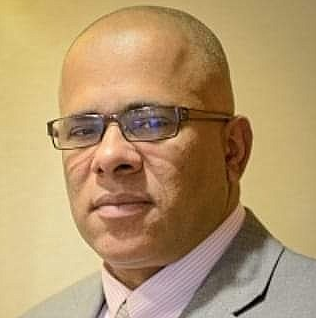Violence Prevention Strategies Highlighted In New Book
By Tia Carol Jones
Tio Hardiman has been doing violence prevention work for about 20 years. First, interacting with street-involved individuals at the grassroots level, then with Ceasefire and now with Violence Interrupters. Hardiman has written a book that looks at violence prevention strategies called “Interrupting Gun Violence: The Public Health Approach.”
In the book, Hardiman details his life, how he grew up in the projects, then spent time in the Avalon Park neighborhood. Hardiman always wanted to write a book given his expertise in violence prevention. He believes that violence is a public health crisis, and in his book, he spells out how a public health model for violence prevention would look. He said violence spreads like an infectious disease. 
“I think a lot of people should put it in that context, otherwise, we would just look at it from a criminal justice point of view,” he said, adding that a lot of people across the country see him as the forefather of the violence prevention movement. “It’s important to have a book out there that can detail a lot of the work I’ve been doing since I’ve been in the field.”
It took Hardiman about a year to write the book. For the last few years, he has been taking notes. With his work as a peacemaker, he didn’t have a lot of downtime to write the book. He also enlisted a ghost writer to ensure he included all the details and format. He said the book can be used as a training tool across the world for violence prevention. In the book Hardiman talks about structural trauma and how it led people to commit acts of violence. He also looks at the history of violence and how it has spread throughout the years.
Hardiman said in the last 20 years since he has been doing violence prevention work, it has really evolved. There are now hospital response units, violence prevention teams, violence intervention teams, as well as trainings for staff for violence prevention – violence de-escalation training and conflict resolution training. Looking at the root causes of violence and adverse impacts of trauma are also now a part of violence prevention. Relationships within the violence prevention space also have changed; faith-based leaders, hospitals, police, business leaders and community residents are also more involved in the work. There is an office of gun violence prevention in the White House, which Hardiman believes is a good thing.
Hardiman said violence prevention training is working and there has been a reduction in violent crimes. He said there are two ways violence prevention works: Violence prevention organizations have hired ex-offenders to work as peacemakers and there are 400 violence prevention outreach workers in the city of Chicago working with high-risk individuals. Employment and education seem to be a deterrent to violent crime, with ex-offenders having access to employment opportunities and being enrolled in alternative education programs. Hardiman added that while employment and education are necessary, high-risk individuals also might need mental health services and behavioral health services.
Hardiman also believes there needs to be a cultural shift. He wants to change the narrative from “kill or be killed” to one of positivity and seeing other people as human. He hopes that shift will lead to those who might participate in violent crime operating at a higher level.
“You change the culture by having all hands-on deck. You’re going to need athletes, you’re going to need entertainers, everyday people in the community, unsung heroes that know a lot of people in the community that young people listen to,” he said.
The book is available on Amazon. For more information about Violence Interrupters, visit violenceinterrupters.org.
